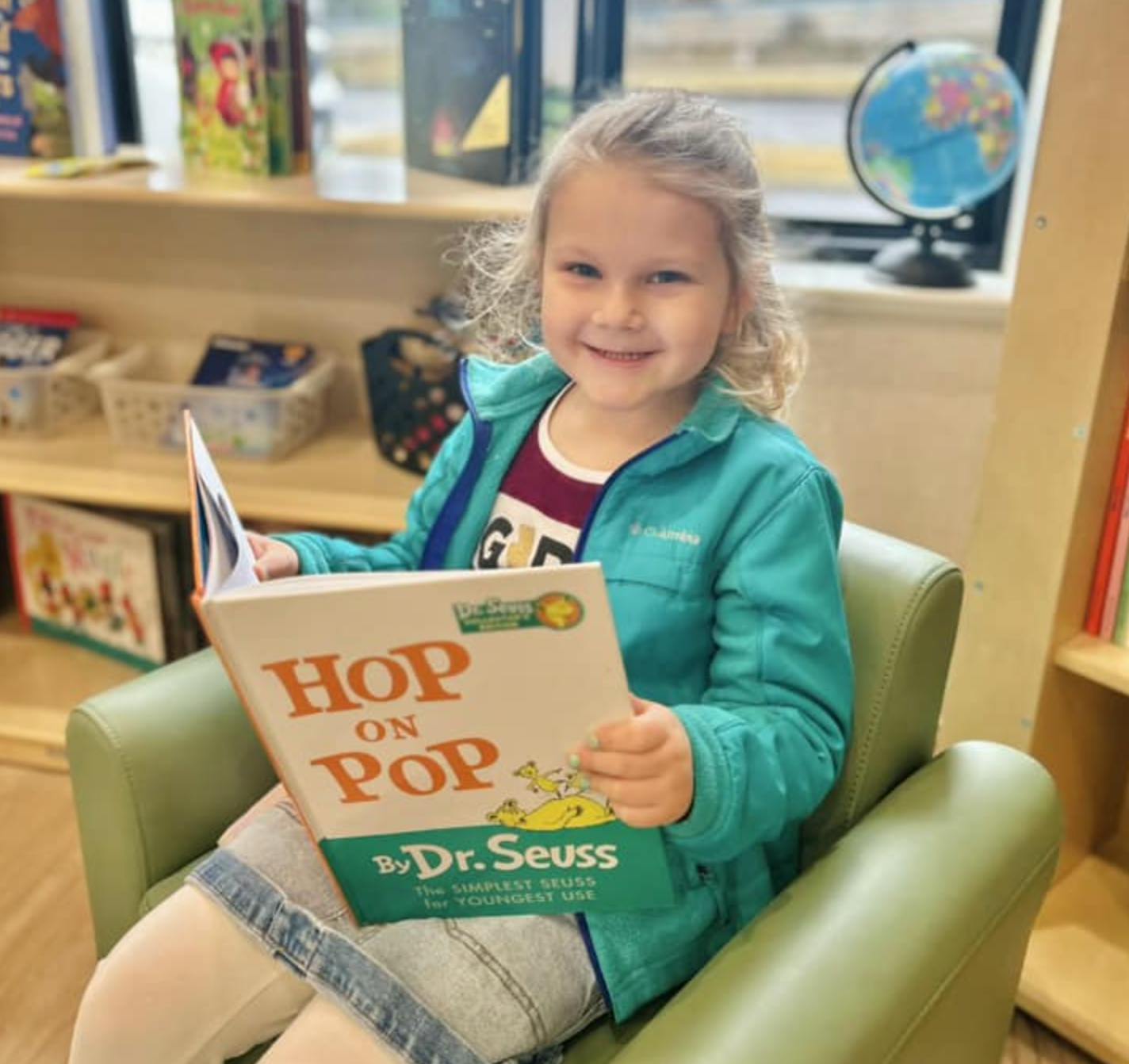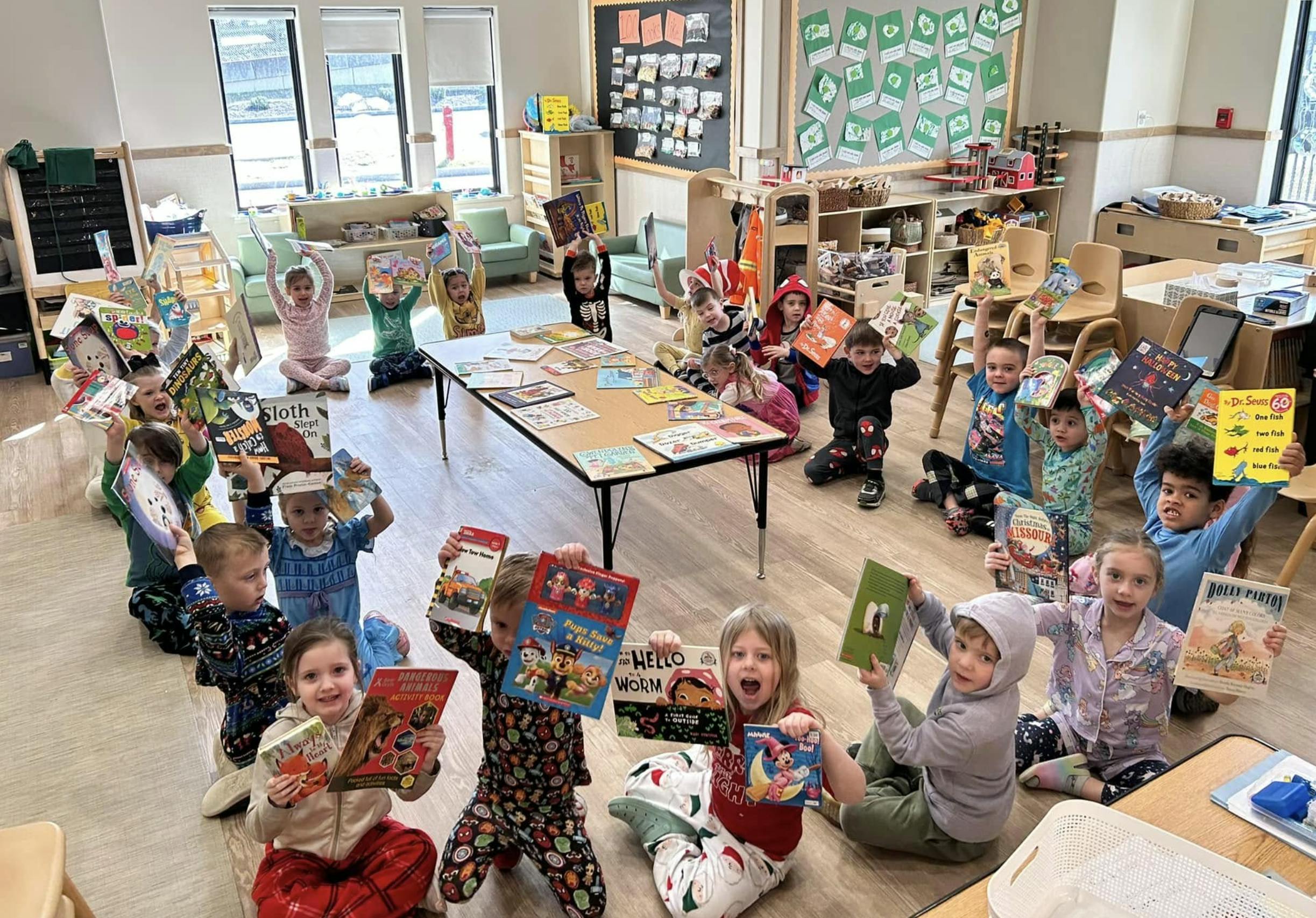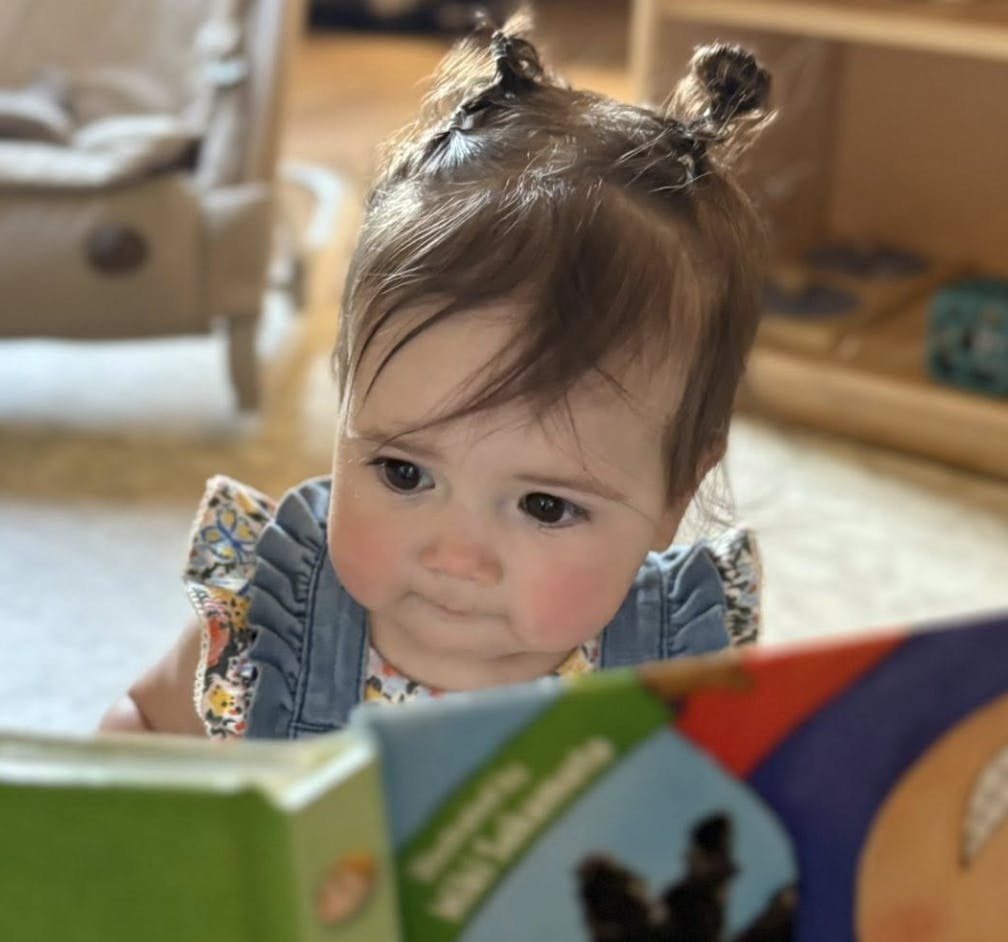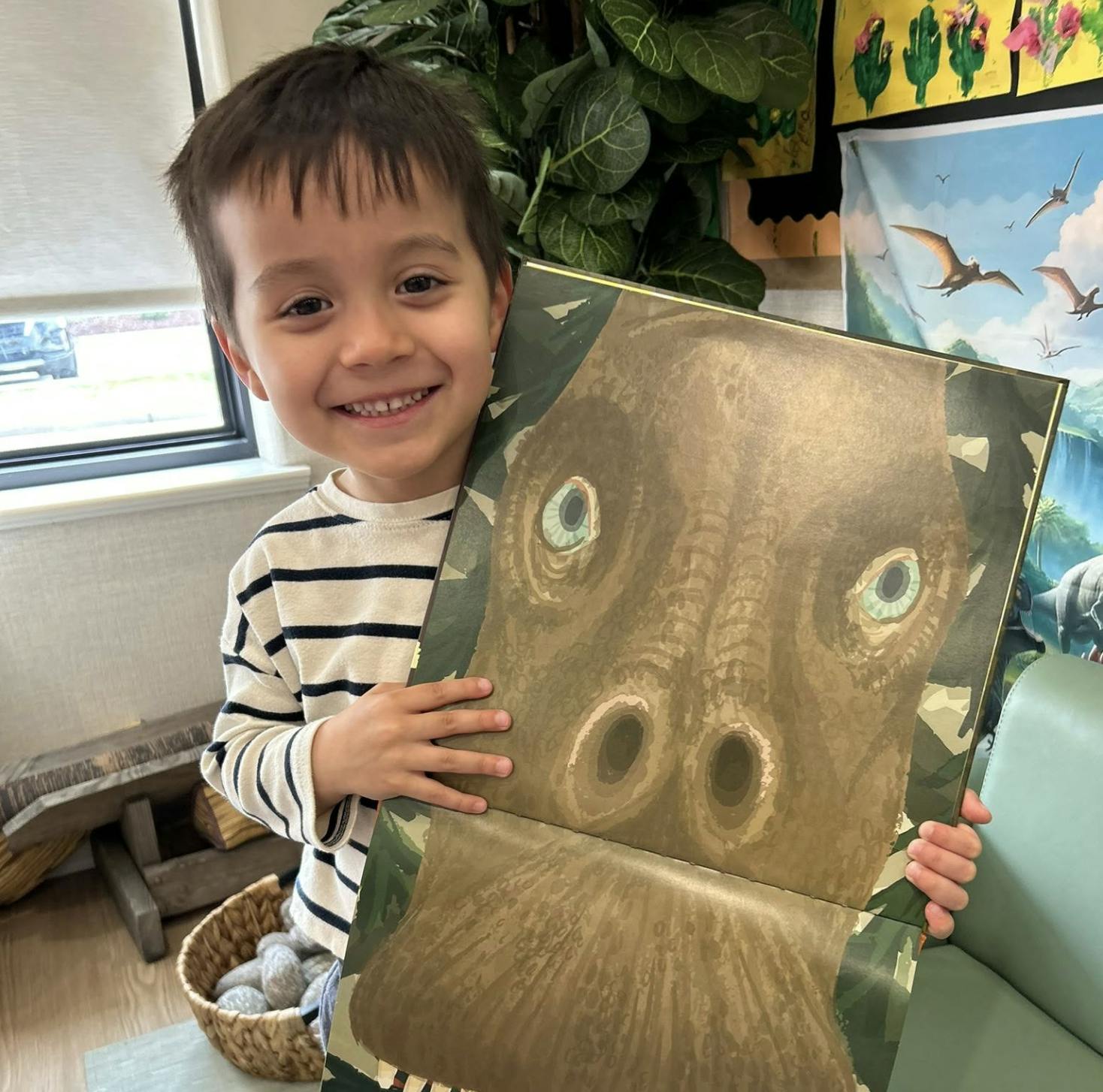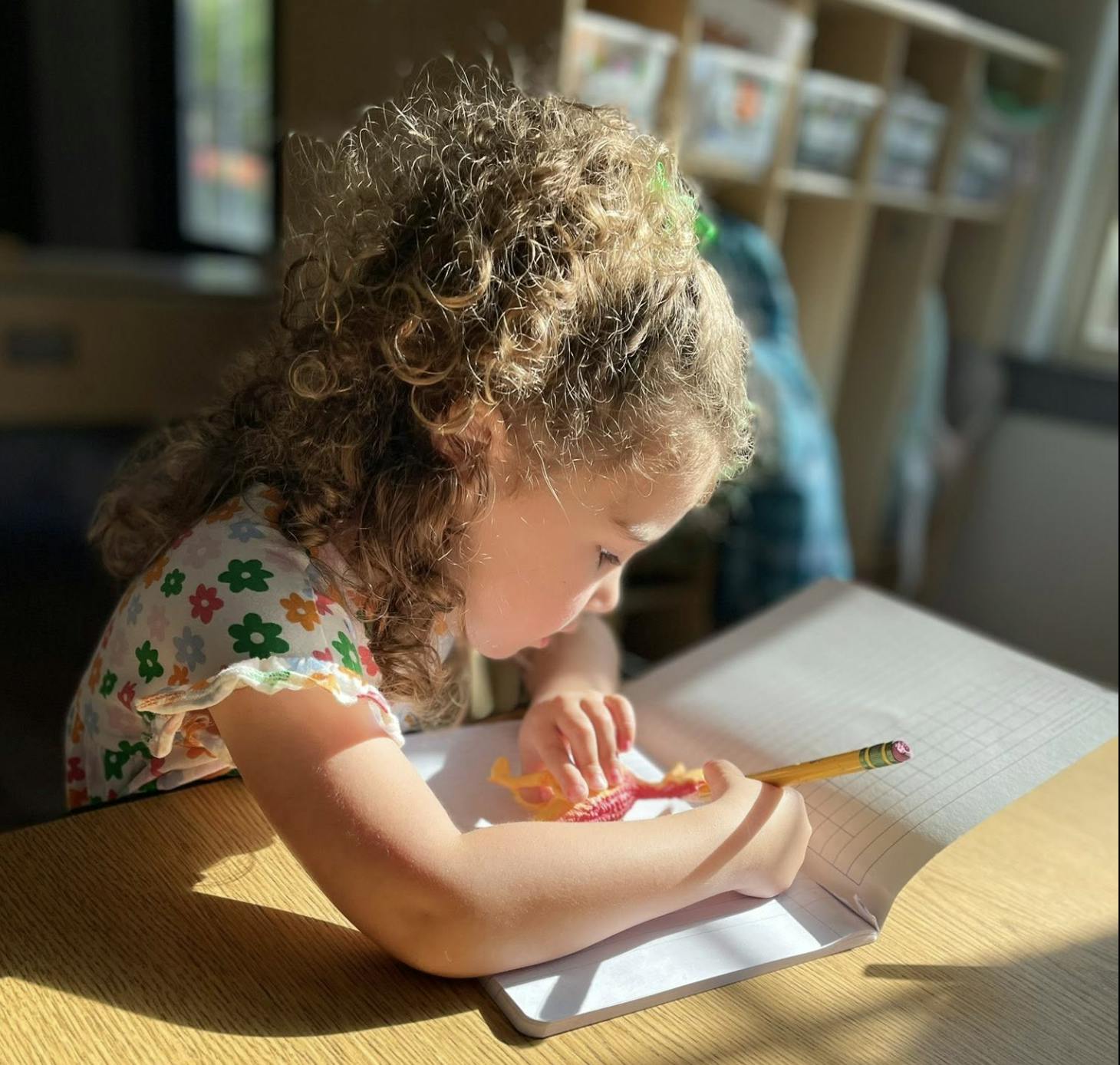
October 2, 2025
What Your Child’s Favorite Book Says About Them
For many parents, there’s a bedtime ritual that never seems to change: your child begs for the same book over and over again. While you might know every page by heart, there’s something meaningful happening in that moment. A child’s favorite story isn’t just about the characters on the page. It can actually give you little clues about who they are and how they see the world.
Why Children Love Certain Books
Children’s books have a magical way of capturing big emotions in simple words and pictures. When a child asks to hear the same story night after night, it’s not because they’re stuck in a rut. Repetition feels safe. Familiar stories let children anticipate what’s coming next, and that builds confidence. It’s one of the earliest steps in early literacy: recognizing patterns, remembering words, and connecting meaning to text.
What Popular Favorites Might Reveal
Here are a few beloved children’s books and what your child’s attachment to them could suggest:
“The Very Hungry Caterpillar” by Eric Carle
If your child can’t get enough of this classic, it might show they love routines and predictability. Watching the caterpillar’s steady growth mirrors their own sense of development and change.
“Goodnight Moon” by Margaret Wise Brown
A favorite of children who find comfort in rhythm and familiarity. This story’s calming repetition may soothe a child who thrives on routine and reassurance.
“Where the Wild Things Are” by Maurice Sendak
A book that appeals to adventurous spirits! Children who love this story may be learning how to balance big emotions like anger and excitement while still wanting the safety of home.
“Don’t Let the Pigeon Drive the Bus!” by Mo Willems
If this one’s a hit in your house, your child may enjoy humor, silliness, and testing boundaries in a safe, playful way.
“Brown Bear, Brown Bear, What Do You See?” by Bill Martin Jr. and Eric Carle
A sign your child loves rhythm, repetition, and predictability — great foundations for building memory and early reading skills.
What Book Genres Say About Your Child
Adventure & Fantasy Stories
Loving books filled with magical lands or daring characters might signal your child’s growing independence and curiosity. They may be beginning to explore ideas of bravery and imagination.
Friendship & Relationship Stories
If your child gravitates to books about best friends, sharing, or helping others, they’re probably working through empathy, cooperation, and what it means to connect with others.
Silly, Funny Stories
Giggle-inducing books may reveal a playful personality. They also show your child is discovering the joy of humor, which can ease stress and build resilience.
Comforting, Gentle Stories
Books with soft illustrations and soothing narratives often appeal during times of transition (like starting school or welcoming a new sibling). These children may crave security and routine.
Repetitive, Rhythmic Books
Children who love patterned, lyrical books are often focused on mastering language and memory. These choices strengthen early literacy by encouraging them to anticipate what comes next.
Children’s Authors to Explore Based on Your Child’s Interests
If you’ve noticed your child leaning toward a certain type of story, here are a few children’s book authors you can explore together:
Adventure & Imagination
- Maurice Sendak (Where the Wild Things Are) for bold, big-feelings adventures.
- Mary Pope Osborne (the Magic Tree House series) for older preschoolers who love fantasy journeys.
Friendship & Relationships
- Kevin Henkes (Chrysanthemum, Lilly’s Purple Plastic Purse) for tender stories about self-expression and belonging.
- Arnold Lobel (Frog and Toad series) for gentle, timeless tales of friendship.
Humor & Silliness
- Mo Willems (Don’t Let the Pigeon Drive the Bus!, Elephant & Piggie series) for laugh-out-loud fun.
- Dr. Seuss for whimsical rhymes and wordplay that keep kids giggling.
Comforting & Reassuring
- Margaret Wise Brown (Goodnight Moon) for rhythmic, soothing classics.
- Anna Dewdney (Llama Llama series) for stories that comfort children through everyday challenges.
Rhythmic & Repetitive Stories
- Bill Martin Jr. (Brown Bear, Brown Bear, What Do You See?) for lyrical, predictable language.
- Eric Carle (The Very Hungry Caterpillar) for colorful repetition paired with early learning themes.
Exploring books by these authors can give your child both the comfort of familiar themes and the excitement of discovering new favorites.
The Role of Storytime in Early Literacy
Reading together is more than a cozy ritual (though it’s that, too!). Each time you read, your child is learning new vocabulary, practicing listening skills, and strengthening their imagination. Children’s books build a foundation for communication, curiosity, and critical thinking. Asking questions like, “Why do you think the character did that?” or “What do you think will happen next?” helps children deepen comprehension and storytelling skills.
How Little Sunshine’s Playhouse Supports Early Literacy
At Little Sunshine’s Playhouse, we know that early literacy is one of the strongest predictors of lifelong learning success. That’s why books aren’t just an afterthought in our classrooms. They’re woven into daily play and exploration. Teachers read aloud, create cozy reading nooks, and encourage children to tell their own stories through art and dramatic play. We carefully select high-quality children’s books that inspire imagination, spark meaningful conversations, and support social-emotional growth.
Every giggle during storytime, every retelling of a favorite book, and every new word spoken is celebrated as a step in your child’s learning journey. Because at Little Sunshine’s, we believe every page turned is another chance for your child to shine.
Read more about reading!
